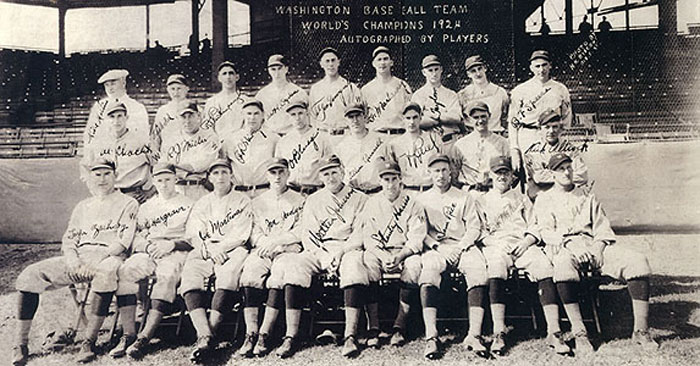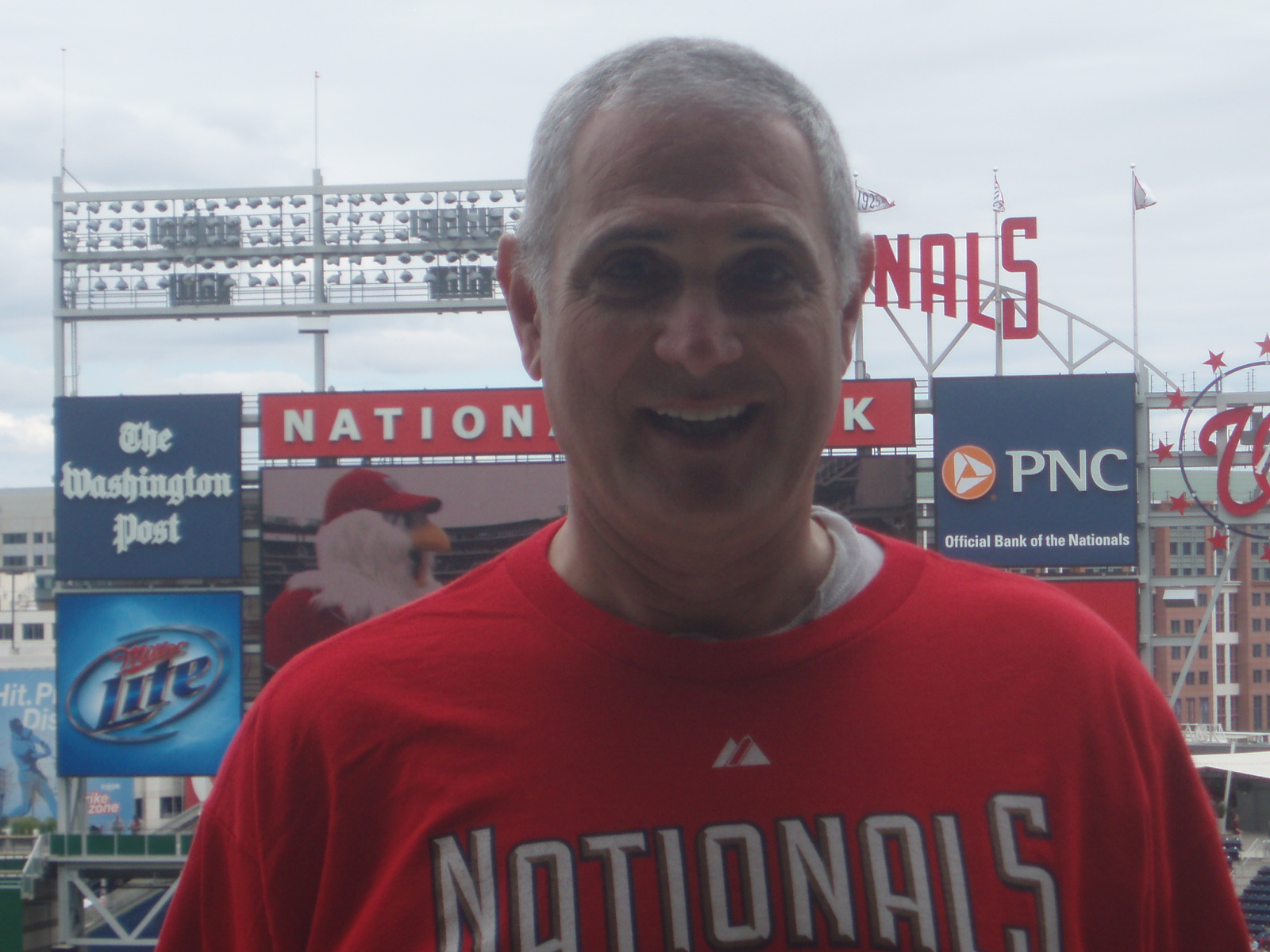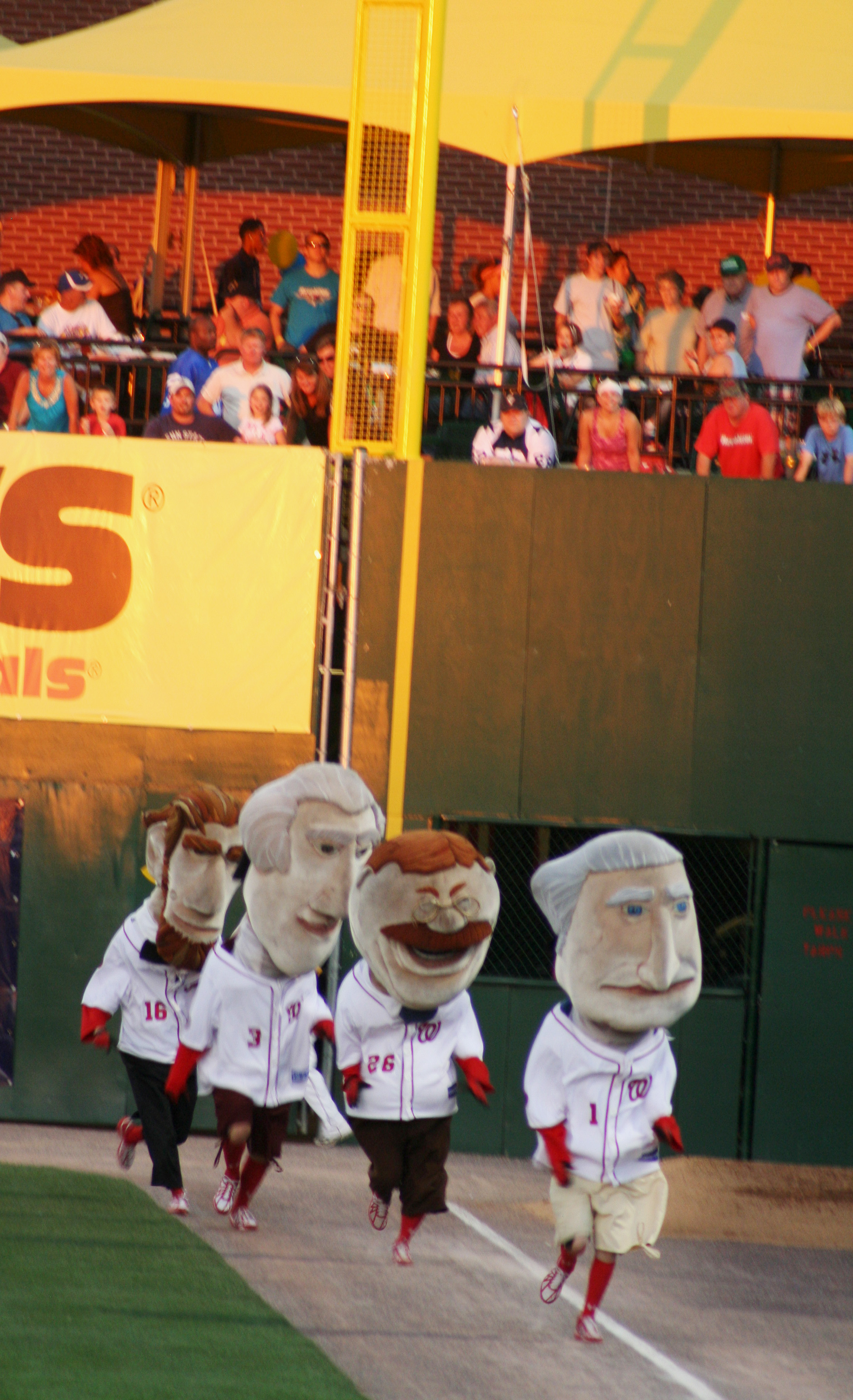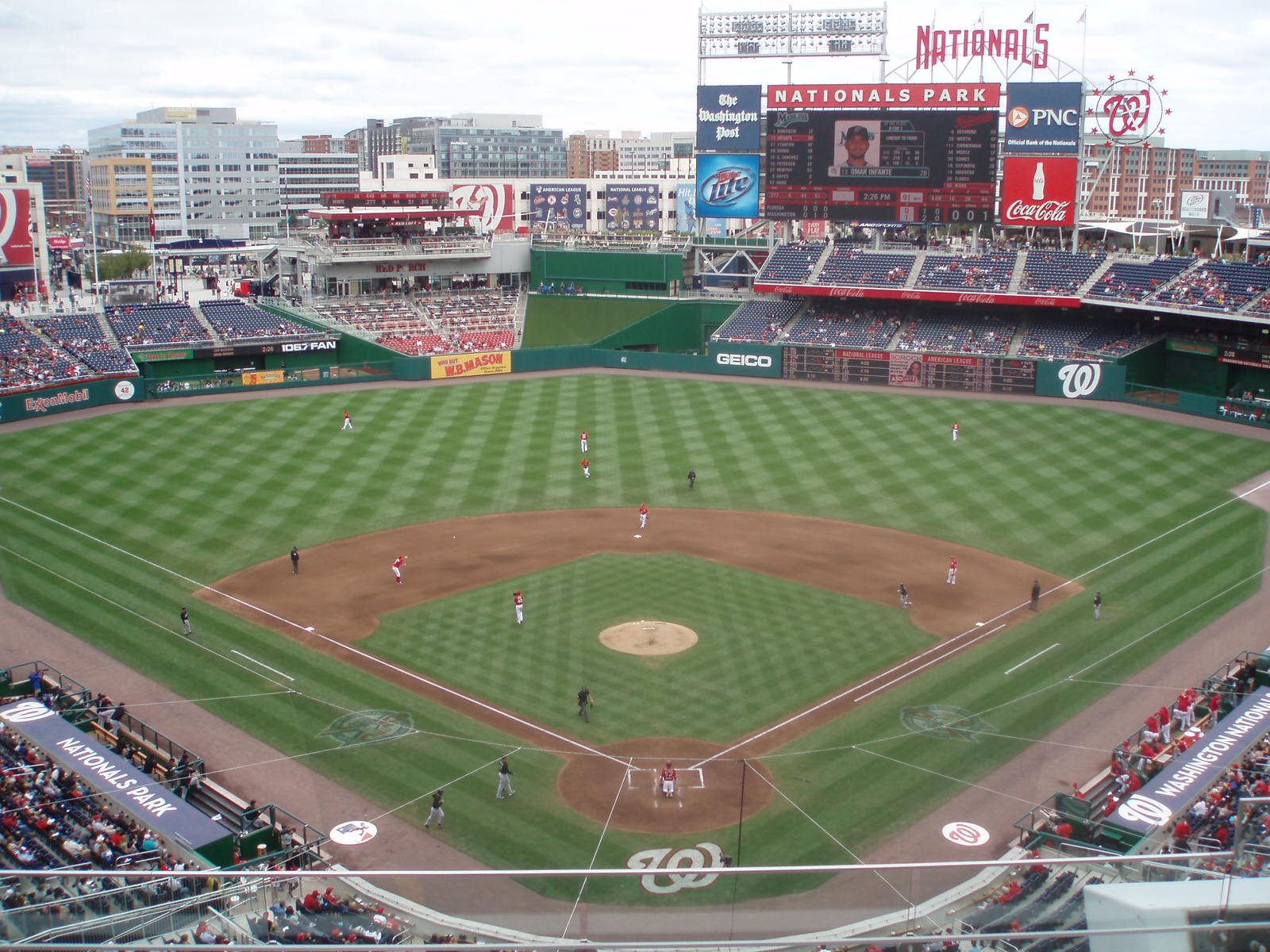Nationals Park
Now Batting Clean Up: This was the last stop on my east coast ball park tour. I had a lot of rainy weather during my journey, so by the time this date rolled around I was armed with an umbrella. I had intended to visit five ball parks, but due to Mother Nature, this was my fourth. Back during my stay in New York City, a combination of rain and commitments eliminated the possibility of going to Yankee Stadium. That was fine because I enjoyed seeing my friends and family, who come first. I’ll save Yankee Stadium for my next east coast swing, when I will combine it with Fenway Park and Citi Field.
Let’s Ignore Each Other: By now I knew the drill. Find the METRO and follow the Nationals t-shirts and jerseys. This mid-September Sunday had both the Nationals and the football Redskins playing at home, so I saw lots of Redskins fans along the way. The ride was in complete contrast to what I experience here in San Francisco, where I almost always take the MUNI light-rail vehicle to the Giants games that I attend. On those cars, there’s non-stop chatter. Every game there is an event, and the passionate Giants fans are charged up. They don’t wait for the game to cheer; they’re already doing it. I’ve heard them chant “Let’s Go Giants” on the streetcars, and not just lately when the team is a winner. When I ride BART to see the Oakland Athletics, although not as animated, their fans talk up their team, too. Not here. The silence on the METRO was shocking, and in its own strange way, deafening.
Step Right Up: I approached the entry gate and was greeted by security personnel, who checked my back pack and patted me down. This is standard for all the ball parks now. I’m fine with it and cooperate fully. I headed in the direction of the ticket booths and searched for the line to purchase my ticket. As I got closer I quickly realized that I was the line. A pleasant Nationals employee assisted me. As I approached the turn style another employee handed me a freebie, a forty-page program entitled “Inside Pitch” complete with a scorecard and a variety of articles and features pertaining to the team. This was a very good publication which is updated frequently during the season, and I kept it. So with program in hand, I ventured into Nationals Stadium.
Washington, DC Baseball: Fasten your seat belts; here’s a brief rundown of the district’s checkered baseball history. There were teams in the District named the Olympians in 1871, the Nationals in 1872 and the Blue Legs in 1873 . I found two teams that played in 1884, the Washington Nationals and the Washington Statesmen. I’m not sure what the relationship was between the two squads; maybe I’ll pick my research up again during this winter’s hot stove league. A team named the Nationals played again in 1875, but I’m not certain if they were the same Washington Nationals who played from 1886 to 1889. Then we skip to what I believe is another franchise that ran from 1891 as the Statesmen and then from 1892 to 1899 as the Senators. With the advent of the “modern era” of baseball in 1901, the Senators emerged that year and persevered until 1960. The lowly teams that played during these decades clearly earned the saying that proclaimed Washington DC baseball was “first in war, first in peace and last in the American League.” And you have to give these teams credit for consistency: from 1871 to 1911, every franchise that played in Washington DC had a losing record. Success came infrequently, but the team did win a World Series Championship in 1924 and had several star players through the years.
 The 1924 World Series Champion Washington Senators
The 1924 World Series Champion Washington Senators
The American League expanded from eight to ten teams in 1961, and as part of the process the Washington Senators moved to Minnesota where they renamed themselves the Twins. A new franchise was then put in Washington DC and given the old name of the Senators. This version of the Washington Senators stayed in place through the 1972 season. They relocated in 1973 as the new Texas Rangers. From 1973 through 2004 Washington DC went without baseball.
Major League Baseball expanded in 1969, with each league adding two teams. The operative team in our story was the Montreal Expos. They were a good team for many years but eventually hit hard times, and had to be taken over by Major League Baseball after the 2001 season. The team played three more seasons in Montreal. After playing in Montreal as the Expos from 1969 through the 2004 season, the team was moved during the off season to Washington DC and renamed the Nationals. During the 2006 season, MLB sold the team to Ted Lerner, a wealthy real-estate developer. That brings us up to date on the team’s circuitous journey.
Our Town: The total immersion into Washington DC baseball begins immediately inside the gate. Statues of past stars greet you, as if to say, this team has a rich, baseball tradition. The walls are dotted with photographs of past achievements. I took a picture of one such display, shown below.
Where’s the BBQ? I was directed up one level to get my ribs. I found the stand but was bewildered when I looked without success for the franchise’s very large, former major league player. It’s not like they don’t have some choices. Former First Baseman Frank Howard is available, all 6’7” and 255 pounds of him. Mike Epstein, on board for five seasons, also qualifies at 6’ 3” and 230 pounds. Once I got over that shock, it was on to the menu choices. The brief menu listed ribs and chicken, except the word jerk was inserted so my choices were jerk ribs or jerk chicken. I had never heard of these before and didn’t want to admit that I had no idea what they were, for fear these people might think I was the jerk. A kind woman at the stand sensed my predicament and volunteered the food was prepared in the Jamaican style. I got the ribs with cole slaw on the side and was not disappointed; the food was delicious and the portion huge.
Today’s Teams: The starting pitchers were Chien-Ming Wang for the Nationals and Brad Hand for the visiting Florida Marlins. I hadn’t seen either pitcher before, and didn’t know too much about them. Wang had some success with the New York Yankees several years ago, but has rattled around a lot since then. I did notice that Hand lugged a record of 1 win and 7 losses into the game, which didn’t bode well for the Marlins.
I’ve seen these teams before during this season, either during this road trip or back home in San Francisco, or both. I know and like some of the players. The Marlins have a young, power-hitting right fielder named Mike Stanton, who hits the ball a long way. First baseman Gaby Sanchez has power, and left fielder Emilio Bonifacio is a scrappy player. On the other side of the diamond, the Nationals have a terrific hitter in third baseman Ryan Zimmerman, a young pitching staff that has great potential, and everyone’s selection for Miss Universe, pitcher Stephen Strasburg.
First Blood: In the bottom of the second Nationals right fielder Jonny Gomes lofted a deep fly to center field that was good for a double. He moved over to third base on a ground out and scored courtesy of first baseman Chris Marrero’s sacrifice fly to right. Nationals 1, Marlins 0.
Pulling Ahead: Ryan Zimmerman opened the Nationals half of the fourth inning by lining a double to left. This was followed by a walk, a single to center, a Marlins error and a ground-rule double that gave the Nationals another three runs. Nationals 4, Marlins 0.
The Marlins Respond: As the top of the fifth is about to begin, I’m thinking that Wang has a shutout and wouldn’t it be nice to see one of those? That notion was immediately dashed when Florida’s first baseman, Gaby Sanchez, launched a bomb down the left field line that dropped into the stands for a home run, and the Marlins were on the board. Nationals 4, Marlins 1.
The Presidents Race: At every home game the Mount Rushmore Presidents make their appearance and participate in a race that starts in right-center field, turns at the right field foul line and finishes midway to the Nationals dugout. I’m not sure why, but Teddy Roosevelt has never won the race. At my game, Teddy didn’t even appear! For “my” race, George Washington opened a huge lead and won, with Thomas Jefferson finishing a distant second and Abraham Lincoln just behind in third place. I don’t recall if the race occurred in the fourth or the fifth inning, but it was fun! Because my pictures of the race were blurred, and I wanted to show these guys, I grabbed a picture, seen below, off the internet.
Top of The Seventh: Marlins Center fielder Bryan Peterson led off by grounding a single between the short stop and the second baseman. One out later, catcher Brett Hayes pulverized Chien-Ming Wang’s last pitch of the night for a home run, sending it to deep left field. Nationals Manager Davey Johnson took Wang out after that. A relief pitcher finished the inning for the Nationals, minimizing the damage. No additional runs were scored during the balance of the game, making the final score Nationals 4, Marlins 3.
Game Wrap Up: Nationals pitcher Chien-Ming Wang turned in what is known in the trade as a “quality start,” which occurs when the pitcher stays in the game for a minimum of six innings and surrenders no more than three runs to the opposition. This definition reflects each starting pitcher’s mission, which is to give his team a chance to win the game by limiting the number of runs he surrenders to the opposing team. For most major league teams, this goal of scoring three or more runs per game is within reach. For his effort Wang got the win, evening his record for the year at 3 wins and 3 losses. Brad Hand took the loss, dropping his record to 1 win against 8 losses. There were two home runs, three doubles including two sizzlers by Ryan Zimmerman; perhaps the Nationals best player, two fielding errors and a total of seven pitchers. Although the weather was cloudy, no rain fell, probably because I brought an umbrella. The announced attendance was 26, 581, which wasn’t too bad considering the Washington Redskins were playing at home at the same time.
Final Thoughts: The Nationals are an improving team, have some power hitters, some good young pitchers on the horizon, a nice stadium and a wealthy owner intent on having a winning team. I enjoyed my time here. I have one criticism, however. For 36 years, this franchise was the Montreal Expos, but I saw no reference to this era, such as a room or a wall, and I looked thoroughly for one. It is possible that I missed it, and now I’m sorry that I didn’t ask someone from Guest Services if one existed. The Montreal Expos were a successful franchise, and although they never won a championship, that shouldn’t matter in Washington, DC. In fact, finishing out of the money is what Washington DC baseball has been about for over a century. The Montreal Expos portion of the franchise deserves some sort of recognition. It almost wouldn’t matter where it was placed, as long as it happens. They couldn’t possibly do any worse than the New York Mets, who jammed their Hall of Fame & Museum into an inadequately-sized room that was shoehorned into a corner that continually screams “afterthought.” Other than this one aspect that can and should be rectified, Nationals Park is a worthwhile stop on anyone’s baseball tour.





Comments